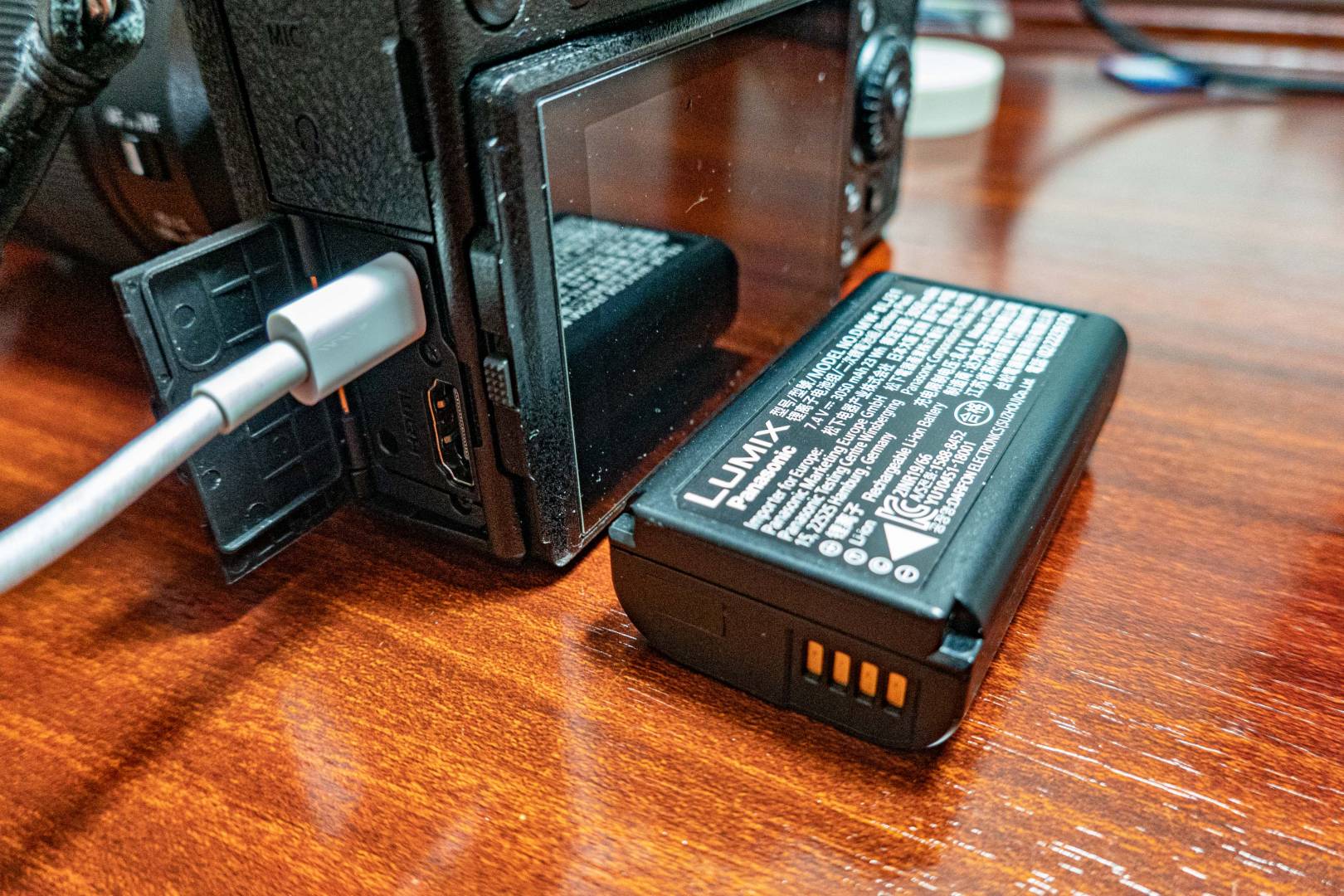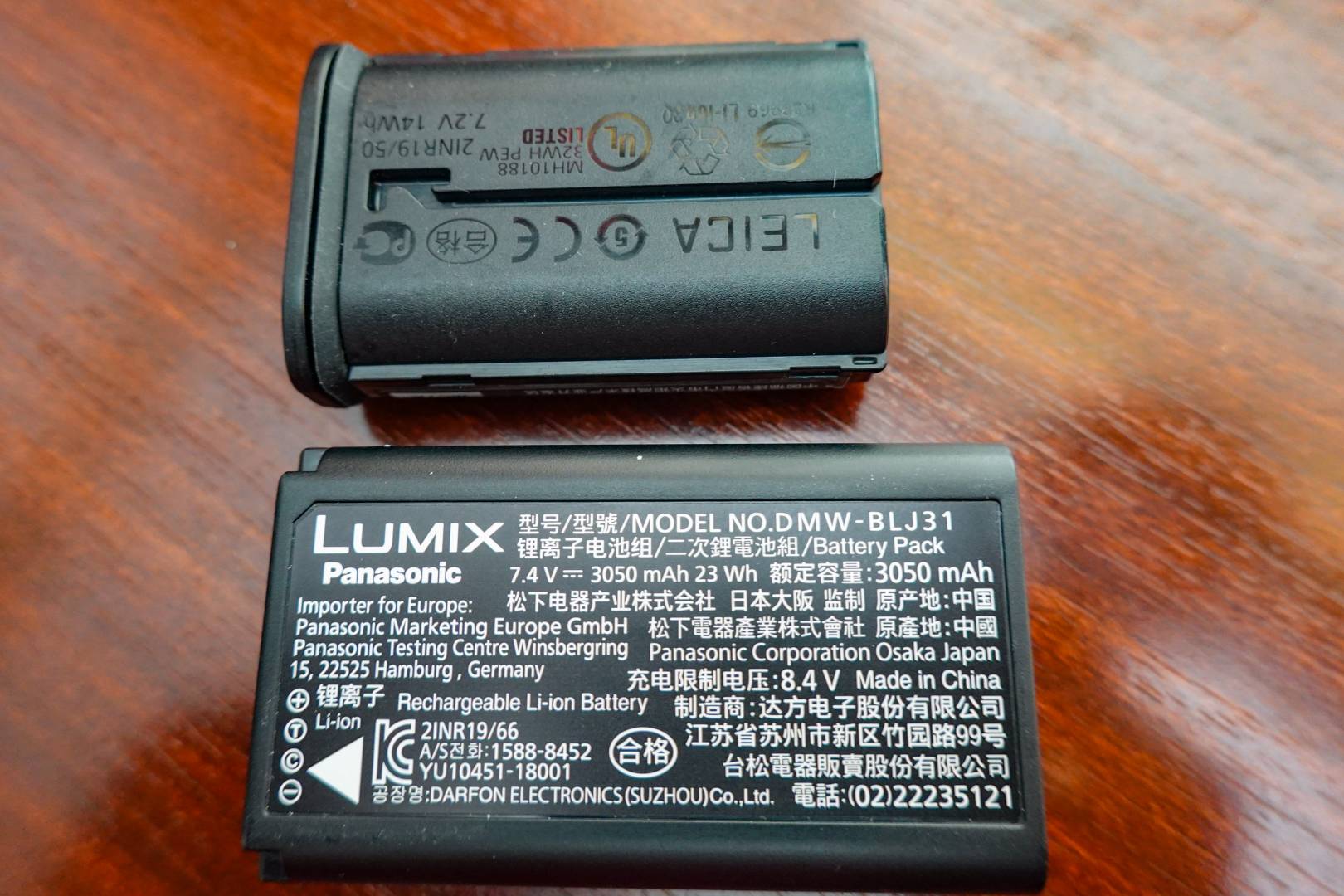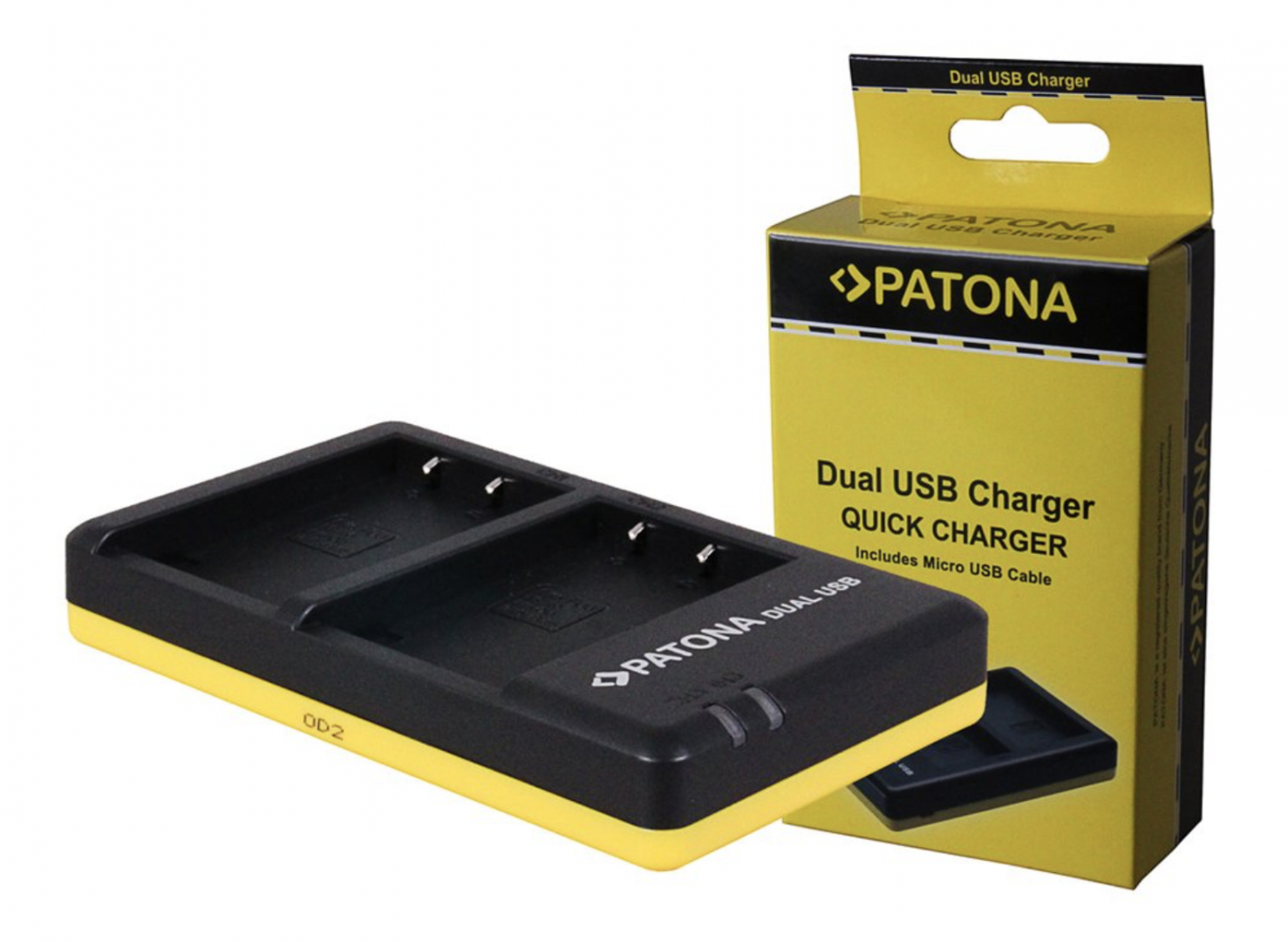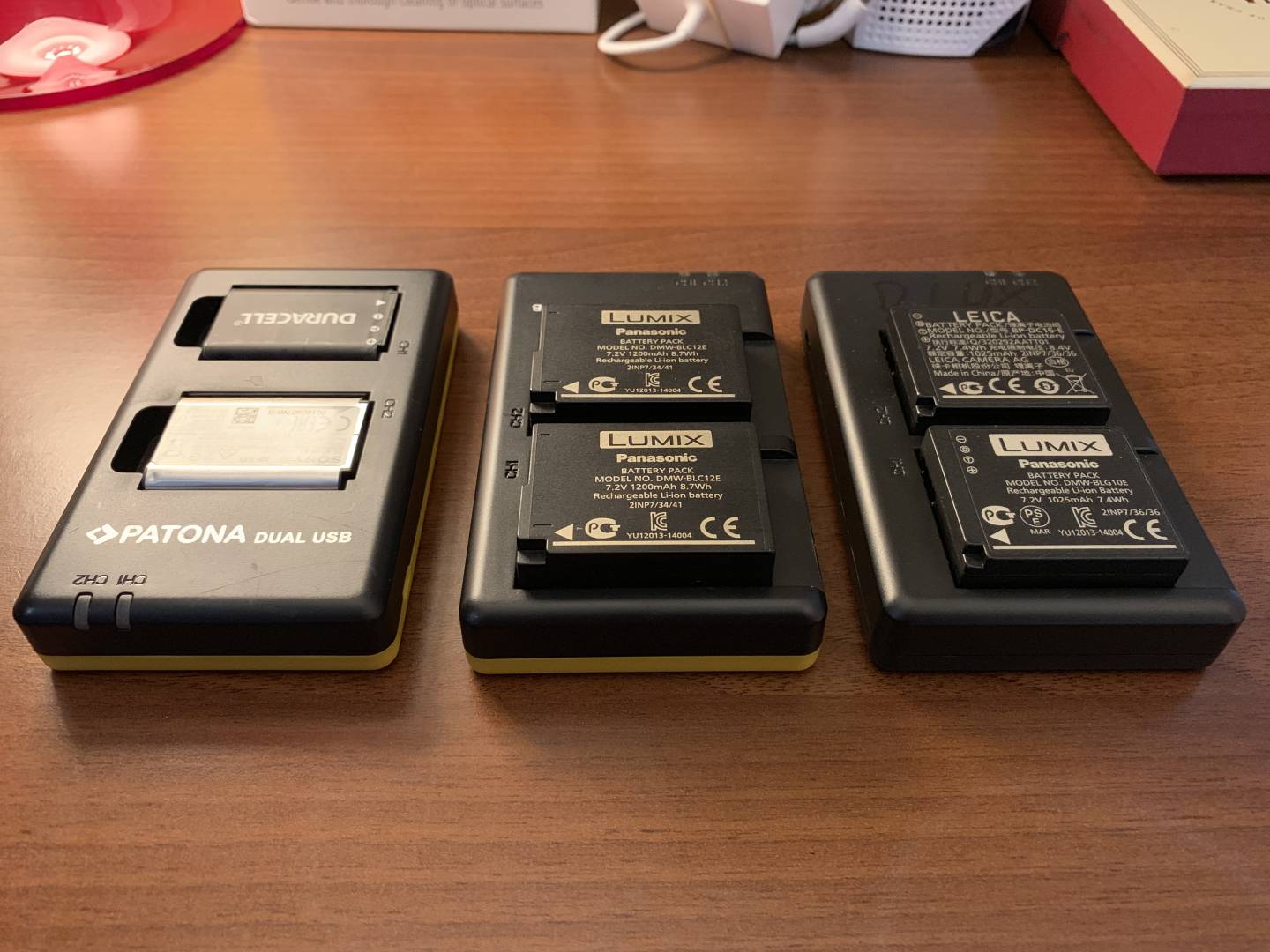In-camera charging: Is it a good idea or something you don’t need? Perhaps you even hate it. When we first encountered direct USB charging there was antipathy in some quarters. It was accused of being a manufacturers’ excuse to stop providing an external charging pod.
Yet more pragmatic photographers accepted that USB charging is almost universal in the world of technology and that bringing it to cameras was actually a big step forward.

I am completely sold on the idea of in-camera charging via USB. Most small to medium-size cameras now have the facility, including, from my stable, the Ricoh GR, D-Lux 7 and the Sony RX100 VI. This convenience is now moving to larger cameras with bigger batteries.
Bigger batteries
Once upon a time, I thought the capacity of the battery was a limiting factor; that bigger batteries were less suitable for direct USB charging. This now appears to have been a fairy tale. For instance, the Panasonic Lumix S1 has in-camera charging despite the huge 3050 mAh battery. Furthermore, Panasonic has adopted the newer, faster USB-C standard. I suspect this ambidextrous connector will take over from the annoying micro-USB on all cameras in the near future. Every time you use one you attempt to insert it the wrong way up.
My Leica D-Lux 7 and the Sony both use now
Convenience

The overwhelming advantage of in-camera charging is convenience. The camera can be powered from any USB charging device, even from a laptop or from an external power pack.
It’s the ideal system for travellers because you need never fear the consequences of leaving the charger at home.
Recently, John Shingleton did just this when he left for his European vacation. His chances of picking up a spare Leica X1 charger were virtually nil — until a Denmark-based reader, John Nicholson, offered the loan of a spare charger. On this occasion, John was very lucky.
Even with more modern cameras, the chan
Leica lag
Leica lags behind the competition with in-camera charging. You won’t find it on any of the German-made models, not on the M10, CL, TL2 or Q. Even the Panasonic-based V-Lux doesn’t offer it, although the Panasonic update, the FZ1000 Mk.II does at last feature it. I have no doubt that the next V-Lux, which is reportedly imminent, will also offer in-camera charging.
The lack of direct charging for Leica models is doubly annoying because, even if you can find one, replacement chargers are expensive. Forget your M10 charger and you will have to fork out £100 or its equivalent. And the Q2, with the SL battery, has a charger costing £120. All this presupposes you can actually find one. Unless you are visiting a major city with a Leica store you have little chance; and even then there is a good possibility that chargers are out of stock.

Leica should pay heed to this. Presumably, there is time to add in-camera charging to the next M (M11?), and to the next CL. The Q2 is completely devoid of ports (as is the current CL), so we will have a wait.
I suspect Leica will say that not having ports is part of the “
But if manufacturers move over the in-camera charging, what happens if we want to charge a battery (or batteries) externally? In some cases, cameras offer both options. The Panasonic S1, for instance, comes with single-battery external charger as well as a USB-C socket. But single or double USB charging stations are available on the aftermarket for almost all cameras and batteries.

External bliss
I can recommend with those from Patona, a German company although, as expected, the chargers are made in China. Patona
I have three of them to complement the Leica CL, Leica D-Lux 7 and Sony RX100 VI. They are very light at 55g and only 17mm deep (with a small 110mm x 65mm footprint). They cost less than £12 and, as far as I am concerned, they are an essential accessory.
Charging speed via USB is slower than with mains-powered chargers, although these traditional units are inevitably bulkier because of the extra electronics inside. So far I’ve had no problems and the Patona double chargers and find them essential for travel. They are so easy to slip into a bag.

Leica T, TL and TL2 also offer in-camera charging via USB-C. CL does not.
Nor does the Q2, which I find a major drawback in 2022. The T was quite the pioneer in USB-C charging…
Leica SL2 has in camera charging.
William, you surprise me. A solar powered watch in Eire. Surely there’s not enough sunshine to keep it going full time?
I think voice power would work well.
I have a recent camera with both in camera charging and a battery charger. The charger for the in camera charging is bigger than the battery charger, so I generally use the latter. I always buy a couple of spare batteries anyway and keep them all ‘boiled up’. All that being said, my wife bought me a solar powered watch as a present some years ago and it is better at keeping time than Swiss watches 10 times the price. Solar power for cameras? Generating enough power for cameras might be difficult, though. How about hybrid power for cameras and instead of using that redundant wind on lever as a stupid thumb rest, it might generate some power when ‘winding on’? Not enough energy there? Well maybe the shutter curtain might generate some power every time it actuates. Not enough? Well there is always the atomic powered camera, but would the atomic power fog the images? Forget about that. Let’s all just buy M3s and enjoy some real photography.
William
Yes, with my extensive experience of the retainer clip breaking I have found that it always seems to fall apart when the battery chamber door is opened. With in camera charging there is obviously no need to open the battery chamber.
As for being an expert my only claim to being an expert is the in the art of carefully packing broken Leicas and posting them to the Leica repairer in Melbourne.
Yes, I can see that never removing the battery from the X1 would ensure that the battery retaining clip never falls out. I hadn’t thought of this as a preventative measure but, of course, you are quite right. I never remove the battery from some of my cameras and just top them up from a USB cable.
……..continued aggressive removal and replacement of the battery weakens an already under-engineered retainer clip and system.
Q: “How did we work that one out” ? A: Serious caffeine firing neurones.
But really, “…two experts…”.? Your words Michael, not ours………sarcasm, hhhhmmm.
A good discussion with Mr X1 at coffee this morning. We decided that in-camera USB charging might at least go some way to solving the broken-battery-clip syndrome on the X series cameras 🙂
Hmmm…. really? How do you two experts work that one out?
Hi Mike,
Neither fussed either way. It also depends on the camera. I do appreciate having the best current charging port on the Ricoh GRIII,! Though in all likelihood this will be out of date in 7 to 10 years. Whilst I like the Ricoh I am less precious (currently) about it, meaning it is a workhorse that will get bashed and replace by the GRIV/V/VI eventually, even so I have a cheap replacement usb twin batteries charger.
With Leica, for me it has nothing to do with practically and it is more one of philosophy. It would irritate to have a micro USB in 15 years on the camera, something that by the would be all but obsolete, which would discernibly prove that my timeless camera was not ageless. This is the argument for less is more. In any case I never take the original chargers from home, I will immediately buy a charger weather Patona or the more techy Nitecore one. I do not mind if I would bump, break or lose these. Moreover in 15 years the replacements would have the latest charging tech available!
Great question.
Best wishes
Kris
A good point about ports and obsolescence with the M. It’s less of a problem with the GRIII and USB-C is welcome there. Agree on the M10-D also.
The different plug on the Ricoh is call “mini” USB, it is not particularly older, just another “universal” plug, I believe that the GRIII employs a USB C plug which seems to be the new black.
I reckon that Leica is just as well not to bother with adding extra sockets to its cameras, as Mike suggests, each time they introduce a new plug, there is another reason to have an inconveniently flat camera. Just buy the extra battery and be forearmed as well as forewarned, and not having to open your camera to charge it is not the be all and end all in convenience anyway.
More convenient is to use a proper M camera, that takes either no battery, or one that can be bought from the end of a supermarket aisle.
Ah, another reason to buy the GRIII!
I own both a usb charger and an extenal charger with my various GRs. You can’t take images while the battery charges through the usb. Best solution for me is having a couple of spare batteries.
I always seem to need more than one battery and therefore prefer external charging – internal just takes so long – and the camera is unusable unless you happen to come to the end of the battery conveniently at the end of a day. So for me, external chargers – even on the S1R are essential.
Hi, in camera charging is not important to me and have never used it. I always carry a second battery since I find that a reliable backup when I am walking around or if I forgot to charge in camera battery. I have done this since film days and rarely need my back up battery.
However, people traveling may have other needs so I certainly do not mind the camera having the ability.
I understand why this feature may appeal to some, but for me its not a factor I have ever really thought about – more because I just throw my chargers in the bottom of my travel bag, and not with my camera kit. My theory on this, is that if I need to charge a battery up I will be back in my room or apartment, and can do so with ease, and the X one is pretty quick to recharge the battery.
I must confess though, that I have never charged the Df while on a holiday, it can do a week on a fraction of a battery, and can pull around 1200 images on a single charge. Weirdly I don’t even carry a back up battery because of this stellar battery life. And for those who are curious, yes I have been caught out by this when I didn’t check the day before I went out to a gig in May, and hey presto the bloomin thing ran out fifty shots in. I just pulled out the X and carried on, so not an issue, but could have been.
This facility wouldn’t be a deal breaker for me.
Just watched a video from a wildlife photog that I follow, he uses in the field a solar battery power pack for his chargers and battery. Looks like when folded up about size of my iPad and cover. Maybe they can also rig with right cable to do in camera charge, don’t know.The man name is Morten Hilmer ex Swedish special forces artic dog sled patrol, 6 months out 2 man teams.
Yep … Leica C Type 112 (shirt pocket Leica) has ‘in camera’ battery charging which I always charge from my iMac … its charger is in the original box and still sealed
The chargers for the SL and the Q are not heavy and it means that you can be charging up batteries while you are shooting.
I have two cameras with in-camera charging (Leica C and Sony RX100iii), and I find it a pain in the neck that I have to take the battery out to charge a spare. And I still have to remember to have the small charging units with me to plug into the cameras! The places I find myself I should have to hunt to track down USB charging. So I’ll stay backward-looking on this matter: chargers that hold a battery every time, so that one can be charging while I am using the other.
The main advantage of a separate charger is that the camera is not tied up and out of action. It is always available.
I prefer a separate charger every time. I have two batteries for my Sony RX 10 MK lV. Likewise for the M10 and Leica S kit.
I agree it is a divisive issue. But it really doesn’t make much difference to offer both in-camera and external charging. Let’s hope Leica take that route. Personally, if they gave me a £120 discount on a Leica I’d take it without the charger and then go to Amazon for a cheap third-party charger.
Well the obvious answer is a battery replacement which is half the size of an original batt – whether for an M9, M10 or whatever – with the rest of the unit being a little hand-cranked dynamo ..imagine the rewind crank of an M4 or M6.
Need a bit of extra charge when up the Himalayas, or on your yacht, or in the Lanes in Brighton?
Whip off the base-plate and crank the handle a few times: no external power source needed.
Concept (c) David B.
Ah! The wind-up radio surfs the AM bands yet again….
I had not thought of a hand rank. Though Leica are so close to that with the wonder on the M10D… beautifully steampunk